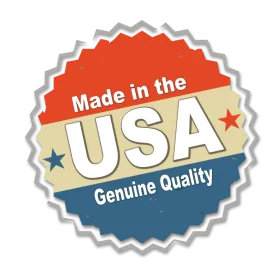Given the rise in false advertising claims, manufacturers and retailers that wish to label or advertise their goods as being “Made in the USA” must be aware of federal and state laws that place certain requirements on the origins of components or parts that make up these products.
In a growing swell of class action lawsuits being filed in California by consumers who allege they were duped by false “Made in the USA” claims in violation of California’s business code, Land’s End Inc. has become the most recent company to face such a complaint. The lead plaintiff, Elaine Oxina, claims that she purchased a necktie online via Land’s End’s website that was allegedly described using a “Made in the USA” country of origin designation but that was, in fact, made and/or contained component parts made outside the United States. The complaint came only one day after a California federal judge denied another major retailer and luxury denim manufacturer’s motion to dismiss a proposed class action asserting that the jeans were falsely marketed as “Made in the USA” when they actually contain foreign parts.
Country of Origin and Labeling Laws
By statute, every foreign article imported into the United States must have a country of origin label unless excepted. Generally, the country of origin is the country of manufacture, production, or growth of any article of foreign origin entering the United States. However, the country in which a substantial transformation is effectuated will render this other country the country of origin. By the express terms of the statute, then, if an article is substantially transformed in the United States, it is no longer a foreign article subject to the marking laws upon import.
Although the article need not be marked with its country of origin, manufacturers and retailers who desire to label or advertise their goods as “Made in the USA” or its equivalent must do so in accordance with the Federal Trade Commission’s (FTC’s) “Made in the USA” policy. Under the FTC policy, “virtually all” of the components in products with “Made in the USA” labels must come from the United States. The FTC has interpreted this standard to mean that “all significant parts, processing and labor that go into the product must be of U.S. origin. Products should not contain any—or should contain only negligible—foreign content.” Also worth noting is the Textile Products Identification Act, likewise administered by the FTC, which requires a textile fiber product processed or manufactured in the United States to be so identified. Zippers, buttons, and the like are exempt from the content disclosure requirements under the Textile Products Identification Act.
Although the FTC policy allows a minimal, yet undefined, amount of foreign content, a 52-year-old labeling law in California is not so generous. The California Business and Professions Code mandates the following:
It is unlawful for any person, firm, corporation or association to sell or offer for sale in this state any merchandise on which merchandise or on its container there appears the words “Made in the USA,” ”Made in America,” “USA,” or similar words when the merchandise or any article, unit or part thereof, has been entirely or substantially made, manufactured or produced outside of the United States.
This means that all merchandise containing foreign parts, no matter how insignificant or far removed from the final product, sold in California and labeled “Made in the USA” must come from the United States.
Implications for Industry
Companies must remain vigilant when sourcing the components and the content of their merchandise and evaluate the same in connection with their manufacturing processes on an individualized basis to determine whether an unqualified “Made in the USA” claim is permissible. Although an unqualified “Made in the USA” claim may be made for merchandise sold outside the United States, the same merchandise may not meet the FTC’s “Made in the USA” standard. However, not all merchandise compliant with the FTC’s “Made in the USA” policy will similarly be compliant with California’s Business and Professions Code. As such, companies may resort to maintaining separate labels governed by the distribution channel in which they will ultimately be sold.



 />i
/>i

